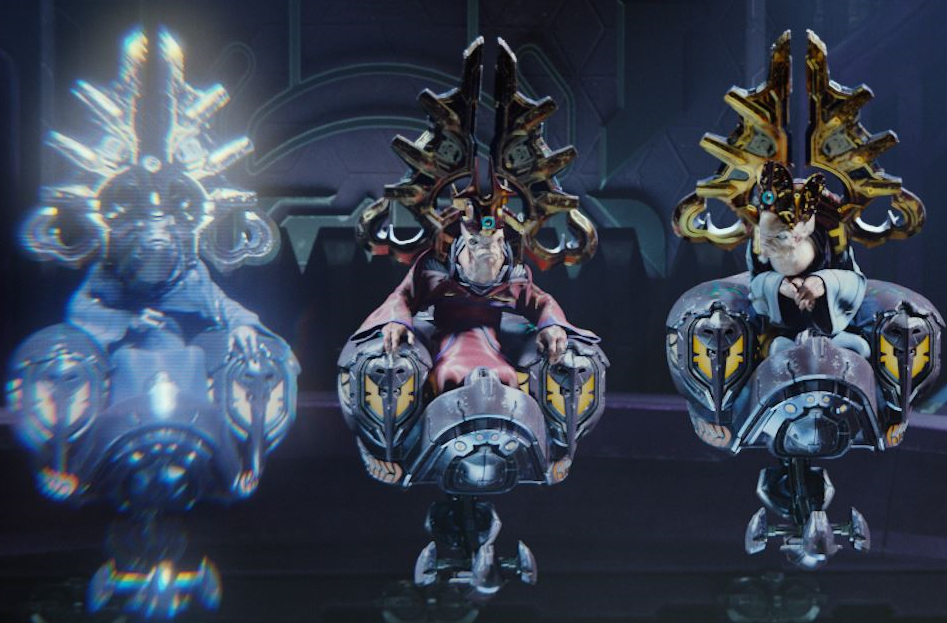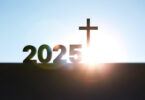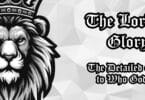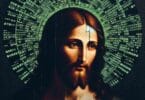A WinePress contributor wrote an interesting essay documenting the parallels between the popular Nintendo game, The Legend of Zelda, and the practices and actions of Roman Catholicism.
There are many pop culture references across various mediums that can trace heavy influence from different religions, occultic practices, and mythologies. This is one of the many examples of that. A popular game that I have played was the first-person shooter known as Halo. And that game has very blatant references to scripture and other pagan religions. The alien race humanity fights known as “The Covenant” bowed down to a trinity known as the “Prophets!”

The rest of the report is by a WinePress contributor who wished to remain anonymous, but asked to be referred to as “La Pura Palabra (The Pure) – Reina Valera 1865.
Ocarina Of Occult
And have no fellowship with the unfruitful works of darkness, but rather reprove them.
Ephesians 5:11
[21] Prove all things; hold fast that which is good. [22] Abstain from all appearance of evil.1 Thessalonians 5:21
First of all, I would like to repent before the Lord for the abominable idolatry I was into back when I was a lost man under videogames. Glory to Him who has shown me the truth and made me rightly hate those unfruitful works of darkness, designed to captivate and draw away attention from the glory and majesty of the Most High God, the Lord Jesus Christ. It is now that looking back, I see all the wicked stuff I was exposed to, from occult themes to blatant blasphemies and all kinds of perverseness on screen.
This has been an idea going through my mind ever since I got saved and started to learn the true meanings and symbolism of the Bible and how the lost world perverts them into false gospels like fake religions and New Age. Up until now I didn’t know how to present or make this study exposing and rebuking some of this, and still don’t know really, but for now I think I’ll just share the information out there.
From all the videogames I used to find vane pleasure in, The Legend of Zelda takes the cake for the most crafty and subtle game being filled with demonic content. It is not blatantly obscene, like other games like Doom with all their gore and disgusting themes, but much like Harry Potter, it presents to the youth the evil of witchcraft and “magic” in a sweet, friendly and appealing chocolate coating. But let us, as vigilant and sober Christians, not underestimate the reach, appeal and danger of videogames either, who specifically target children and young adults.
To those unfamiliar with the series, it was created in 1986 by designer Shigeru Miyamoto, a top personality in the industry working for Nintendo, a man whom I once admired but now eschew as lost and very much possible involved in the occult, seeing the tremendous international success of this and other of his inventions, which include the famous Super Mario. In a similar manner to Walt Disney, a grade 33 mason, who is also still regarded as a kid-loving, charming and brilliant gentleman, I believe Miyamoto likewise has a pretty dark closet in his soul, but I digress… That is not for me to judge.
What I can judge though, with the Scriptures in hand and Lord willing, are his fruits. I can’t do anything now that I’m saved with all the useless “knowledge” I got from years and years of playing videogames, but at least I can apply it to exposing them for caution of others. And believe me, I am an “expert” on those matters, to my shame.
I know this is a strange subject and I really don’t know how to present it or if it’s even worth it, but I hope you like it anyways. I’m partly motivated by [Bryan Denlinger of King James Video Ministries’] exposé of the Lord of the Rings, thanks to which I found his channel to begin with.
“CHRISTIAN” ORIGINS
Unbeknownst to most people are the supposed Christian origins of this multi-million worth franchise. Quoting from Zeldapedia, a wiki dedicated to the series, we learn the following facts:
Christianity was the intended religion of the Legend of Zelda series prior to the creation of the Golden Goddesses. Based on the real world religion, its existence is very vague, but it is implied throughout the early installments of the series.
It is important to note, however, that the lost world makes no distinction between Christianity and Catholicism, calling one the other without any remorse. We quickly realize, however, that the main source for the franchise is not true, biblical Christianity (which would be an absurd effort contrary to Scripture anyway), but Roman Catholicism.
It is also not true that it only applied to the first games, and that is something the lost world also doesn’t see due to their lack of discernment and knowledge of the Scriptures: the blatant Catholic and occult references have been hidden in future games under the guise of the “Hylian religion” predominant in the world of the game but they are still to this day the core and the driving force of the drama. We will hopefully address the awful concoction of Catholicism, mysticism and witchcraft of the series in future studies.
For now, let’s look at some examples straight from the games themselves:
Early official artwork for the series’ third game shows Link, the hero, praying to a figure of Christ crucified. His character is very akin to that of a knight templar, a Catholic crusader, wielding in the first game’s cover a shield with a cross on it. Deep inside, The Legend of Zelda is nothing more than The Crusade of Zelda: the young and valiant Catholic hero fighting for the Pope-ish figure of princess Zelda against the evil Ganondorf, a Muslim stereotype who defies the “holy” authority and wants to overthrow it and take over the world (to be further explained).
It is no surprise then that we find in the very first game and item called openly “the Bible”, albeit only in the Japanese version:
Interestingly, the Book of Magic resembles a stereotypical depiction of the holy book of Christianity, the Bible, as it has a cross on its cover. This is due to the fact that the Book of Magic was actually called the Bible in the Japanese version of the game. It was likely changed for all subsequent releases due to Nintendo of America’s strict content guidelines.
Now, this is important to highlight, because “the Bible” is considered a “Book of Magic”, a spell grimoire, which is a huge blasphemy against the word of God. The Bible strictly forbids such books and the use of witchcraft, which is the foundation of the whole franchise:
And many that believed came, and confessed, and shewed their deeds.19 Many of them also which used curious arts brought their books together, and burned them before all men: and they counted the price of them, and found it fifty thousand pieces of silver.
Acts 19:18
So, in a sense, the Bible is treated as a mere “spell book”, a “means-to-an-end” for our antichrist hero. Furthermore, Zeldapedia states:
The Book of Magic, also known as the Magic Book, is an item from The Legend of Zelda. […]. If Link already has the Magical Rod, obtaining the Book of Magic changes the nature of the spell cast by the wand; when the magic sent from the wand hits a wall or other solid object, it bursts into flame. […]
We can easily draw another blasphemous parallel between this and the Scriptures:
And Elijah answered and said unto them, If I be a man of God, let fire come down from heaven, and consume thee and thy fifty. And the fire of God came down from heaven, and consumed him and his fifty.
2 Kings 1:12
And when his disciples James and John saw this, they said, Lord, wilt thou that we command fire to come down from heaven, and consume them, even as Elias did? 55 But he turned, and rebuked them, and said, Ye know not what manner of spirit ye are of.
Luke 9:54
To conclude, here are other notable situations in other games:
Zelda II: The Adventure of Link – The Cross, a Christian symbol and relic, is an obtainable item that is used to make invisible objects such as the Moa become visible. Additionally, Wizzrobes have red crosses on the front of their robes.
The Legend of Zelda: A Link to the Past – Although this game rang in the religion of the Golden Goddesses and the Triforce, official artwork was released regardless that depicted Link kneeling before a crucifix. Right before the entrance to the Desert Palace, Link finds a tablet which, if read by using the Book of Mudora, tells him to pray to open the door. He then draws a cross on his chest while the first nine notes of the Sanctuary theme play. Incidentally, there is a pentagram inside of the Desert Palace in the Japanese version, though this was replaced with a nonsensical symbol in International versions. The Loyal Sage character was also a priest in the Japanese version, and his Sanctuary was intended to be a church.
The Legend of Zelda: A Link Between Worlds – The Sanctuary returns in A Link Between Worlds, the direct sequel to A Link to the Past.
(Sources)
https://zelda.fandom.com/wiki/Christianity
https://zelda.fandom.com/wiki/Book_of_Magic
https://zelda.gamepedia.com/The_Legend_of_Zelda
The WinePress needs your support! If God has laid it on your heart to want to contribute, please prayerfully consider donating to this ministry. If you cannot gift a monetary donation, then please donate your fervent prayers to keep this ministry going! Thank you and may God bless you.










Awesome =)
Quite the article here! I enjoyed reading it! Well done!